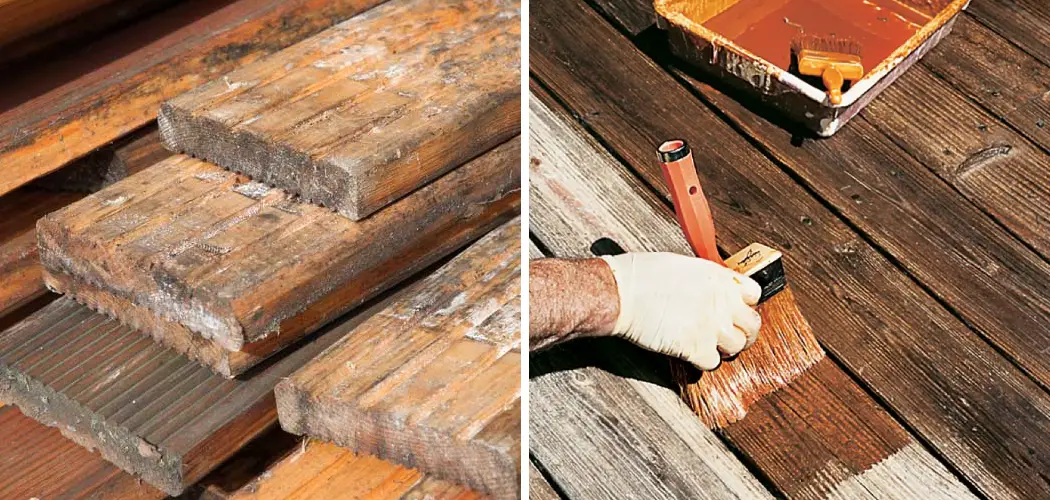Wood is one of the most durable materials used in construction, but over time it can succumb to weathering. Excessive sun exposure and rain can make wood look worn, discolored, and aged prematurely. If you’re looking to restore weathered wood, such as wooden furniture that has seen better days, or a fence panel that needs rescuing from the elements, then this post is for you.
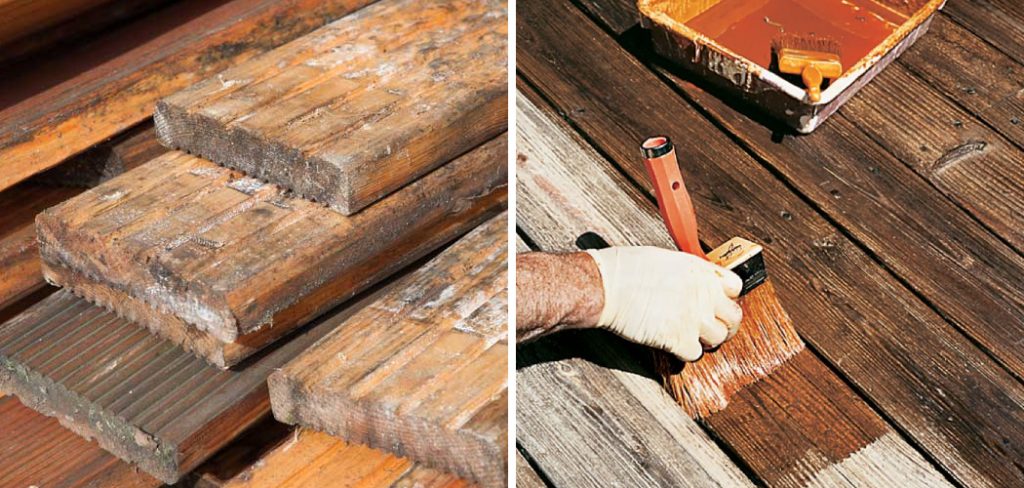
We’ve put together an easy guide on how to fix weathered wood so you can breathe life back into your outdoor space. With just a couple of steps and some common materials, it’s possible to repair and turn around sun-damaged particles in no time! Read on for some guidance on ways to repair the wear and tear caused by weathering over the last few weeks or months.
Will Bleach Restore Weathered Wood?
The short answer is yes, but with a few caveats. Bleach can help restore wood that has been discolored by sun exposure and other weathering elements, but it’s important to use the right kind of bleach for the job. Chlorine bleach is great for removing mild discoloration, but it won’t be strong enough to remove deep stains from heavy weathering.
Oxygen bleach, on the other hand, is a much better option for restoring heavily weathered wood as it contains no chlorine and won’t damage the wood fibers. Although it’s effective for removing deep stains, oxygen bleach does take longer to work and isn’t as widely available.
10 Methods How to Fix Weathered Wood
1. Use a Wood Cleaner
One of the first things you can do to fix weathered wood is to use a wood cleaner. Wood cleaners are designed to remove dirt, grime, and other debris from the surface of the wood. This will help to restore the wood’s natural color and make it easier to refinish. If you have a piece of furniture or decking that needs restoration, make sure you use the right cleaner for the job. However, make sure you wear protective clothing and gloves when using any cleaning products.
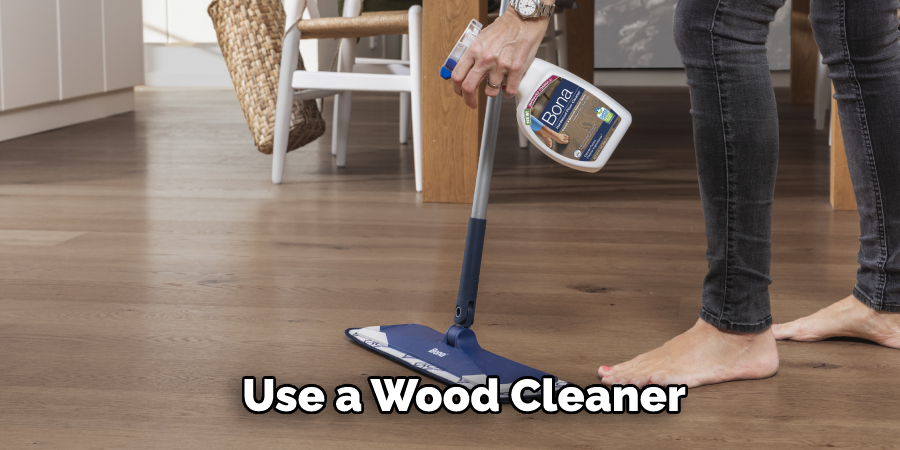
2. Use Sandpaper
If the wood is not too badly weathered, you may be able to sand it down and refinish it. Start with a coarse-grit sandpaper and work your way up to a finer grit. Be sure to sand in the direction of the grain to avoid damaging the wood. Although this method may require a bit of elbow grease, it can be an effective way to bring back some of the wood’s original coloring. Try to avoid using a power sander, as this can cause more damage than good.
3. Use a Wood Stripper
If the wood is severely weathered, you may need to use a wood stripper to remove the old finish. Wood strippers are harsh chemicals that should be used with caution. Be sure to follow the manufacturer’s instructions and wear protective clothing when using a wood stripper. However, this method can be effective in restoring severely weathered wood. Make sure you rinse the wood thoroughly to remove any chemical residue after stripping.
4. Use Bleach
Bleach can be used for a variety of cleaning tasks around the house. It is especially effective for getting rid of mold and mildew, killing bacteria and germs, and removing stains on the fabric. When using bleach, always make sure to follow the instructions carefully and use it in a well-ventilated area. You can also dilute the bleach with water for a less-harsh cleaning solution that is just as effective. Additionally, never mix bleach with other cleaning products, as this can create a dangerous chemical reaction. By using bleach to disinfect surfaces around your home, you can help reduce the risk of spreading germs and other organisms.
5. Use Vinegar
Vinegar is another household product that can be used to lighten weathered wood. Vinegar is less harsh than bleach and will not damage the wood if used properly. Simply apply vinegar to a cloth and wipe down the surface of the wood. Allow the vinegar to sit for a few minutes, then wipe it off with a clean cloth. Repeat this process until the desired lighting effect is achieved. Once finished, seal the wood with a protective coating to help maintain its new color. Though vinegar is less harsh than bleach, it can still cause discoloration if left on the wood for too long, so be sure to use it sparingly.
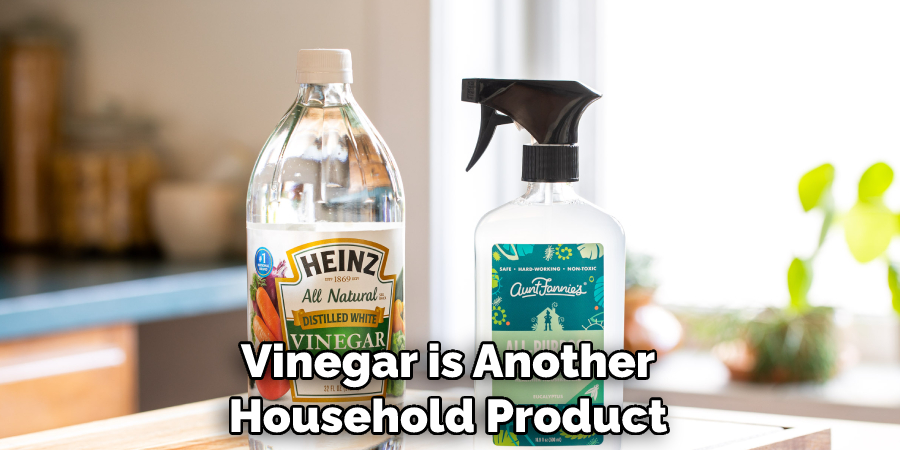
6. Use Hydrogen Peroxide
Hydrogen peroxide can also be used to lighten weathered wood. Hydrogen peroxide is available at most drugstores and is relatively inexpensive. Simply apply hydrogen peroxide to a cloth and wipe down the surface of the wood. If the wood is particularly weathered, you may need to apply multiple layers of hydrogen peroxide. Allow each layer to dry before applying the next. Once you’ve finished, you should be able to see a noticeable difference. Be sure to wear gloves and eye protection when working with hydrogen peroxide, as it can be harmful if it comes into contact with your skin or eyes.
7. Use Olive Oil
Olive oil can be used to nourish and protect weathered wood. Simply apply olive oil to a cloth and rub it on the surface of the wood. Olive oil will help to restore moisture and protect the wood from further damage. It can also be used to clean and restore the color of the wood. Simply apply a small amount of olive oil onto a cloth and rub it on the surface of the wood. You will be amazed by the results. Though it won’t work for every type of wood, olive oil can be an effective way to care for weathered wood. Now you know how to care for weathered wood and keep it looking beautiful. With a little effort, your furniture can look as good as new. So go ahead, try these tips and enjoy the newfound beauty of your weathered wood furniture.
8. Use Beeswax
Beeswax can also be used to protect weathered wood from further damage. Simply apply beeswax to a cloth and rub it on the surface of the wood. Beeswax will help create a barrier that will protect the wood from moisture and other elements. The wax will also give the wood a nice shine and can help bring out the natural grain of the wood. Additionally, beeswax is an all-natural product that is safe to use on both indoor and outdoor furniture. Just be sure to avoid using too much beeswax, as it can make your furniture look too glossy.
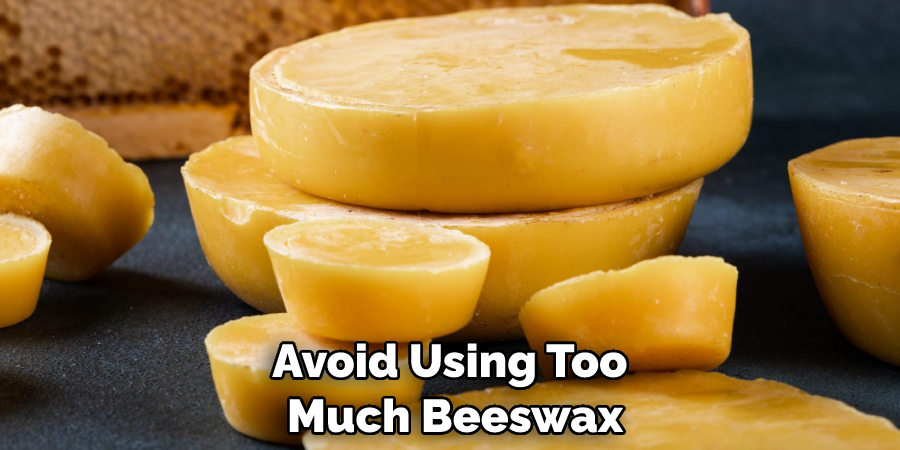
9. Treat With Linseed Oil
Linseed oil is another popular option for treating weathered wood. This oil acts as a lubricant, helping fill in any cracks or dents in the wood while protecting it from further damage. Simply apply linseed oil with a cloth or brush and massage it into the grain of the wood. Allow it to soak in overnight before wiping away any excess with a clean cloth. Linseed oil not only helps protect the wood from moisture and other elements, but it can also give the wood a nice shine and bring out its natural grain.
10. Clean With Soapy Water
If your weathered wood is particularly dirty or full of grime, you may want to try cleaning it with soapy water. Simply mix some mild detergent with warm water in a bucket and dip a soft brush into the mixture. Gently scrub the surface of the wood, taking care not to use too much pressure as this could damage the wood further. Once you’re done, simply rinse off the soap with a damp cloth and let the wood dry completely before applying any protectants or sealants.
Things to Consider When Fixing Weathered Wood
1. Determine the Degree of Damage:
Before attempting to fix weathered wood, it is important to assess the severity of the damage. In some cases, the wood may just be weathered and faded. In other cases, the wood may be cracked or split due to age or exposure to the elements. Knowing the degree of damage can help determine what kind of repair is needed and if it is even possible to fix the wood.
2. Select an Appropriate Cleaner:
Weathered wood needs to be cleaned before repairs can begin. A mild soap and water solution may do for lightly weathered wood, but more serious damage may require a stronger cleaning agent such as oxalic acid or trisodium phosphate. It is important to choose a cleaner that will not further damage the wood while being effective in removing dirt and debris.
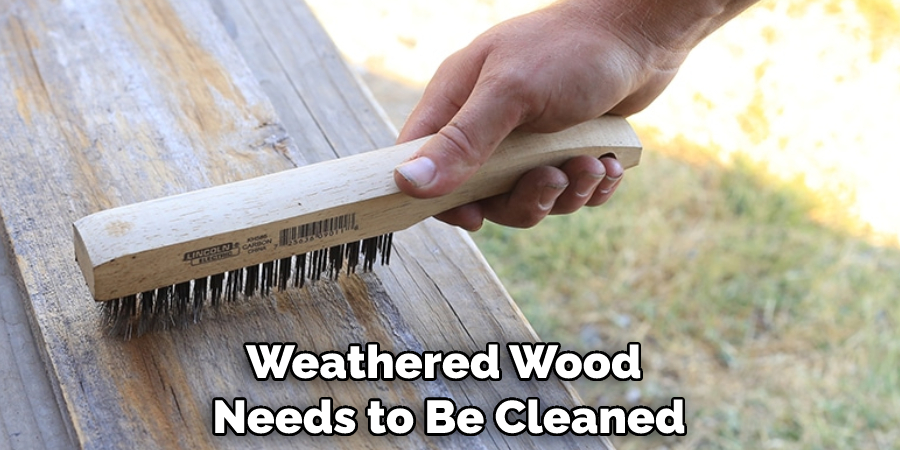
3. Remove Loose Splinters:
If there are loose splinters or pieces of decayed wood, these should be removed before any other repairs are attempted. Using a chisel or small knife, carefully remove any caked-on dirt and splinters. Be sure to wear protective gloves while doing this.
Conclusion
You can use these tips on how to fix weathered wood to make it look new again. With a little bit of time and effort, you can have your furniture or deck looking great in no time. If you have any questions or need help with this process, be sure to contact a professional. They will be able to help you get the job done right and ensure that your furniture or deck lasts for years to come.
You Can Check It Out to Fix Sanding Marks After Staining

